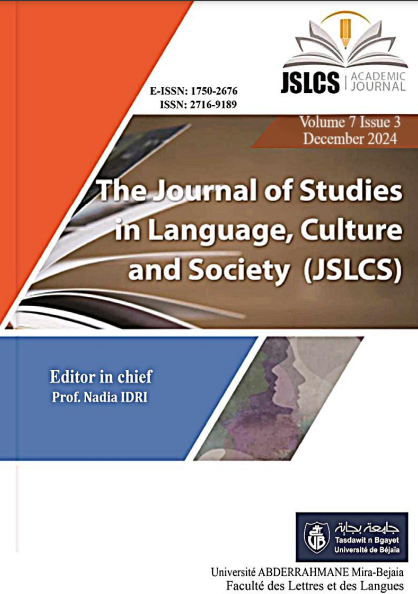Contributions of African Researchers to Trends, Trajectory and Development of Priming Theory
Keywords:
Priming, Theory Testing, Theory Building, Trends, Communication ResearchersAbstract
Priming is a theoretical paradigm that has dominated media effects studies worldwide, with important studies testing and building the theory. There is an arguable age-long discourse of intellectual poverty on theory building and theory testing in Africa, an exposition that follows the arguable domination of the global South by the global North in contributions to research and theory on communication and media studies, especially the priming theory. This study re-examines this discourse by determining the trajectory, trends and development of the theory, showcasing the contributions of scholars from the two divides to priming paradigm. The study adopted desk review and quantitative content-analysis of studies as its methodology. Findings show that most of the studies on priming were conducted between 2011-2020 and 2001-2010 in the USA with Nigeria coming behind Kenya.The studies focused attention on mass media and mostly adopted probability and quantitative methodology. Findings show that studies that adopted priming from Africa lacked the capacity to contribute to theory building and testing, because of gaps in methodology and application. The study recommended capacity building on theory testing and theory building for African communication researchers to bridge the gap.
References
Althaus, S. L., & Kim, Y. (2006). Priming effects in complex information environments: Reassessing the impact of news discourse on presidential approval. The Journal of Politics, 68(4), 906-976. https://doi.org/10.1111/j.1468-2508.2006.00483.x
Bargh, J. (2014). The historical origins of priming as the preparation of behavioral responses: Unconscious carry over and contextual influences of real-world importance. Social Cognition, 32(9), 209-224. https://doi.org/10.1521/soco.2014.32.supp.209
Brewer, P., Graf, J., & Willnat, L. (2003). Priming of framing. The International Journal for Communication Studies, 65(6), 493-508. Carpentier, F. (2016). Priming: Memory, Media and Minorities. The Routledge Companion to Media and Race (1st ed.). Routledge.
Cho, J. (2005). Media, interpersonal discussion, and electoral choice. Communication Research, 32(3), 295-322. https://doi.org/10.1177/0093650205275382
Hallahan, K. (1999). Seven Models of Framing: Implications for Public Relations. Journal of Public Relations Research, 11(3), 205-242.
Hart, A., & Middleton, J. (2014). Priming under fire: Reverse causality and the classic media priming hypothesis. The Journal of Politics, 76(2), 581-592. https://doi.org/10.1017/S0022381613001539
Hoewe, J. (2014). Toward a theory of media priming. Annals of the International Communication Association, 76(2), 312-321. https://doi.org/10.1017/S0022381613001539
Iyengar, S. (1989). How citizens think about national issues: A matter of responsibility. American Journal of Political Science, 34(4), 878-900. https://doi.org/10.2307/2111113
Iyengar, S., & Kinder, D. (2010). News that matters: Television and American opinion. University of Chicago Press.
Kim, S., Han, M., Choi, D., & Kim, J. (2012). Attribute agenda setting, priming, and the media’s influence on how to think about a controversial issue. International Communication Gazette, 74(1), 43-59. https://doi.org/10.1177/1748048511426991
Krosnick, J., & Brannon, L. (1993). The impact of war on the ingredients of presidential evaluations: George Bush and the Gulf Conflict. American Political Science Review, 87(4), 963-975.
Krosnick, J., & Kinder, D. (1990). Altering the foundations of support for the president through priming. American Political Science Review, 84(2), 497-511.
Lashley, K. (1951). The problem of serial order in behavior. Oxford: Bobbs-Merrill.
M’Bayo, D., Sunday, O., & Amobi, I. (2012). Intellectual poverty and theory building in African mass communication research. Journal of African Media Studies, 4(2), 139-155. https://doi.org/10.1386/jams.4.2.139_1
Meyer, D., & Schvaneveldt, R. (1971). Facilitation in recognizing pairs of words: Evidence of a dependence between retrieval operations. Journal of Experimental Psychology, 90(2), 227-234.
Miller, J., & Krosnick, J. (1996). News media impact on the ingredient of presidential
evaluations: A program of research on the priming hypothesis. In Political Persuasion and Attitude Change (pp. 71-91). University of Michigan Press.
Moy, P., Tewksbury, D., & Rinke, E. (2016). Agenda-setting, priming, and framing. In The International Encyclopaedia of Communication Theory and Philosophy (pp. 1-6). John Wiley & Sons.
Ndlela, N. (2007). Reflections on the global public sphere: Challenges to internationalizing media studies. Global Media and Communication, 3(3), 324-329.
Nwosu, P. (2007). Strengthening communication curriculum in support of development: Thecase of Africa. 3rd Biennial Conference, Association for the Study of the Worldwide African Diaspora, Rio de Janeiro, Brazil.
Okigbo, C. (1987). American Communication Theories and African Communication Research: Need for a Philosophy of African Communication. Africa Media Review, 1(2), 18-31.
Roskos-Ewoldsen, D., Klinger, M., & Roskos-Ewoldsen, B. (2007). Media priming: Ameta-analysis. In Mass Media Efects Research: Advances Through Meta-Analysis (pp. 49-62). Lawrence Erlbaum Associates Publishers.
Roskos-Ewoldsen, D., Roskos-Ewoldsen, B., & Carpentier, F. (2009). Media priming: An updated review. In Media Efects: Advances in Theory and Research (pp. 191-213). Taylor & Francis.
Scheufele, D. (2000). Agenda-setting, priming, and framing revisited: Another look at cognitive effects of political communication. Mass Communication and Society, 3(2), 297-316. https://doi.org/10.1207/S15327825MCS323_07
Scheufele, D., & Tewksbury, D. (2007). Framing, agenda-setting, and priming: The evolution of three media effects models. Journal of Communication, 57(1), 9-20.
Takens, J., Kleinnijenhuis, J., Van Hoof, A., & Van Atteveldt, W. (2015). Party leaders in the media and voting behavior: Priming rather than learning or projection. Political Communication, 32(2), 249-267. https://doi.org/10.1080/10584609.2014.944319
Tanjong, E., Eselem, E., & Tita, C. (2016). Beyond scholarship: Africa’s contribution to mass communication theory. International Journal of Communication, 26(1), 57-81.
Thesen, G., Green-Pedersen, C., & Mortensen, P. (2017). Priming, issue ownership, and party support: The electoral gains of an issue-friendly media agenda. Political Communication, 282-301. https://doi.org/10.1080/10584609.2016.1233920
Valentino, N., Brader, T., & Jardina, A. (2013). Immigration opposition among US Whites: General ethnocentrism or media priming of attitudes about Latinos? Political Psychology, 34(2), 149-166. https://doi.org/10.1111/j.1467-9221.2012.00928.x
Valenzuela, S. (2009). Variations in media priming: The moderating role of knowledge, interest, news attention, and discussion. Journalism & Mass Communication Quarterly, 86(4), 756-774. https://doi.org/10.1177/107769900908600403
Weaver, D. (2007). Thoughts on agenda setting, framing, and priming. Journal of Communication, 57(1), 142-147. https://doi.org/10.1111/j.1460-2466.2006.00333.x
Weaver, D., McCombs, E., & Spellman, C. (2007). Watergate and the media: A case study of agenda-setting. American Politics Quarterly, 3(4), 458-472
Downloads
Published
How to Cite
Issue
Section
License
Copyright (c) 2024 Kehinde Abdul-afees Ayantunji

This work is licensed under a Creative Commons Attribution 4.0 International License.







